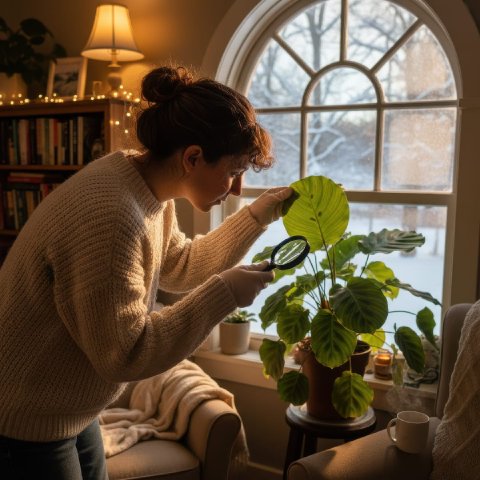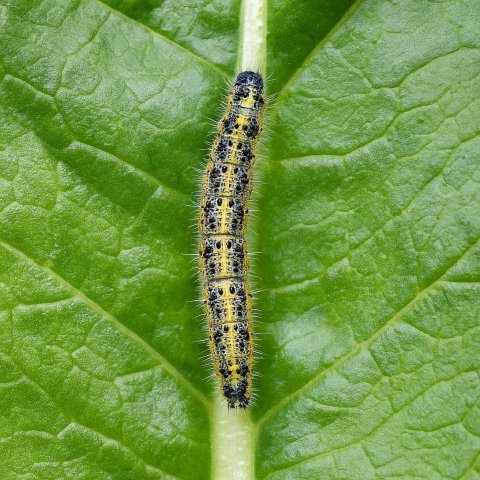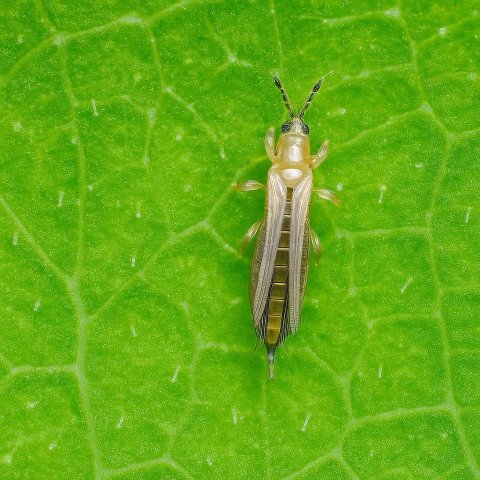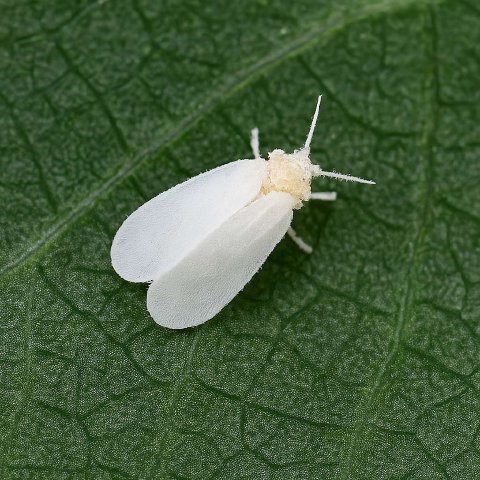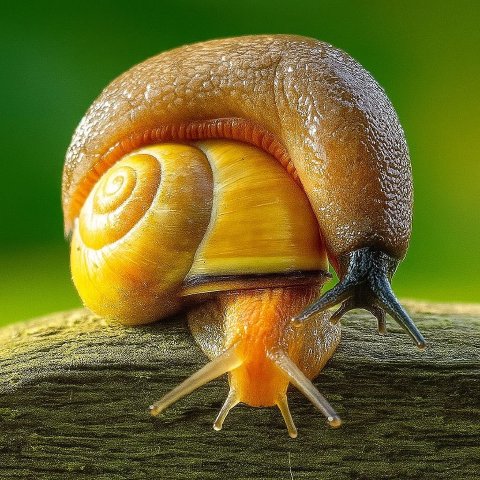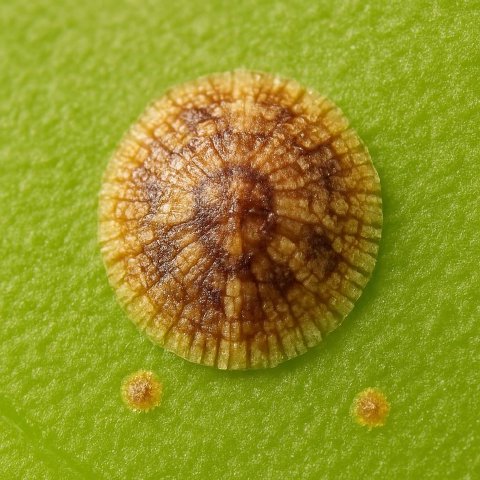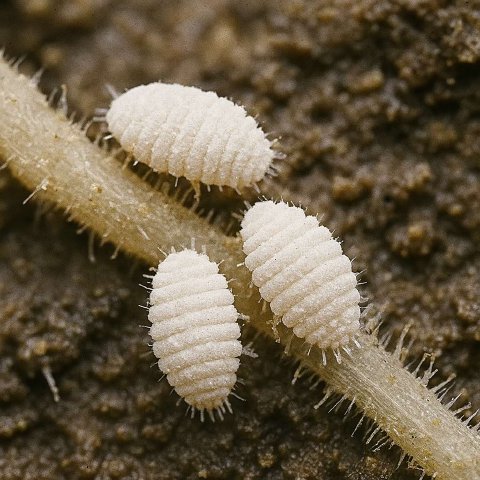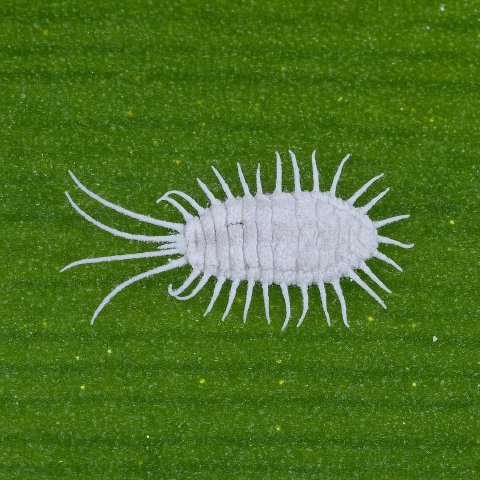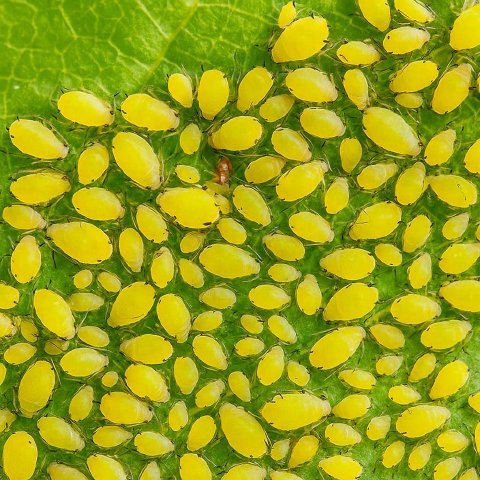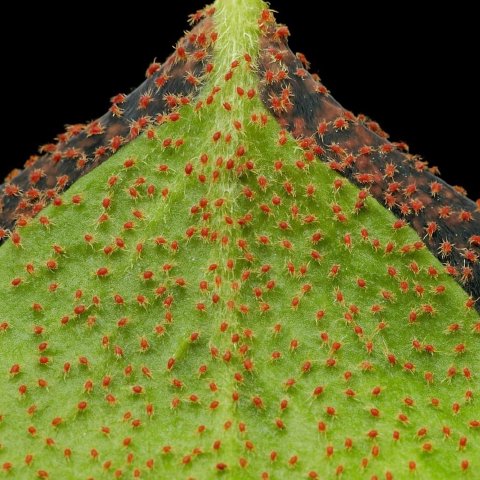🪴 In This Guide 🪴
🔎 What Are Fungus Gnats? A Closer Look
Understanding the Pest
Fungus gnats are small, dark-bodied flies, often mistaken for fruit flies. The crucial difference is their habitat: fruit flies hang around your kitchen and fermenting produce, while fungus gnats stick close to houseplants and moist soil.
The adult fungus gnat’s life is short and simple: they mate and lay eggs (up to 200 of them!) in the top layer of moist potting soil. In a few days, these eggs hatch into tiny, translucent larvae. It’s these larvae that are the real problem. They feed on fungi, organic matter, and, unfortunately, the delicate roots of your plants.

How to Identify Fungus Gnats: Signs & Symptoms
Identifying a fungus gnat problem involves looking at both the air and the soil.
- Visible Adult Flies: You’ll see small (2-3mm), black flies with long legs and antennae that resemble tiny mosquitos. They are weak fliers and tend to hover around the soil surface or run across it.
- Location, Location, Location: They are attracted to light, so you may find them on nearby windows. If you disturb the plant or soil, you’ll often see a cloud of them fly up.
- Struggling Plant: While the adults are harmless, a heavy larval infestation can damage the root system. This may cause the plant to show signs of distress, such as yellowing leaves, sudden wilting, or stunted growth.
- Larvae in Soil (Hard to See): The larvae are tiny (4-5mm), clear or whitish with a black head capsule. You are unlikely to see them without close inspection of the very top layer of soil.
🤔 What Causes a Fungus Gnat Infestation?
Why Did They Choose My Plant?
Fungus gnats are a direct symptom of soil that is too moist for too long. They thrive in damp conditions because it encourages the growth of the soil fungi their larvae feed on. Common causes include:
- Overwatering: This is the number one cause. Watering too frequently keeps the top layer of soil consistently damp, creating a perfect breeding ground.
- Poor Drainage: Pots without drainage holes or heavy, dense potting soil can retain too much water.
- Infested Soil: Sometimes, a new plant or a bag of potting mix comes with a pre-existing population of gnat eggs or larvae.
🌿 How to Get Rid of Fungus Gnats: A Step-by-Step Treatment Plan
Step 1: Let the Soil Dry Out
This is the most critical and simplest step. Fungus gnat larvae cannot survive in dry soil. Allow the top 1-2 inches (or more, for larger pots) of your potting mix to dry out completely before watering again. For most plants, this is a healthy practice anyway.Step 2: Target the Adults with Sticky Traps
To break the life cycle, you must stop the adults from laying more eggs.
- Yellow Sticky Traps: Fungus gnats are attracted to the color yellow. Place these sticky cards on stakes in the soil or lay them flat on the soil surface. They are incredibly effective at trapping the adult flies.
Step 3: Kill the Larvae in the Soil
This is the most important part of the treatment. Choose one of the following methods.
- Mosquito Bits (Bti): This is the gold standard. Mosquito Bits contain a naturally occurring bacterium (Bacillus thuringiensis israelensis, or Bti) that is toxic to the larvae of gnats and mosquitos but harmless to plants, pets, and people.
- Recipe: Add 4 tablespoons of Mosquito Bits to 1 gallon of water and let it steep for at least 30 minutes.
- Application: Strain out the bits and use this “Bti tea” to water your plants thoroughly. Repeat with every watering for a few weeks to eliminate all larval stages.
- Hydrogen Peroxide Drench: A 3% hydrogen peroxide solution can also kill larvae on contact.
- Recipe: Mix one part 3% hydrogen peroxide with four parts water.
- Application: Wait until the soil is dry, then water your plant thoroughly with this solution. You will hear fizzing as it kills larvae and aerates the soil. Use this for 1-2 waterings before switching back to regular water.
Step 4: Consider Bottom Watering
Bottom watering allows the roots to absorb water from a saucer below, leaving the top layer of soil dry. This makes the surface inhospitable for fungus gnats looking to lay eggs.🛡️ How to Prevent Fungus Gnats from Coming Back
Proactive Plant Care
- Master Your Watering Routine: The best prevention is to avoid overwatering. Always check if the top layer of soil is dry before you water again.
- Use Well-Draining Soil: Ensure your plants are in a potting mix that allows for good aeration and drainage.
- Add a Top Dressing: A half-inch layer of horticultural sand or decorative pebbles on top of the soil can create a dry barrier that discourages gnats from laying eggs.
- Inspect New Plants & Soil: Before bringing a new plant home or using a new bag of soil, check it carefully for any signs of pests.
